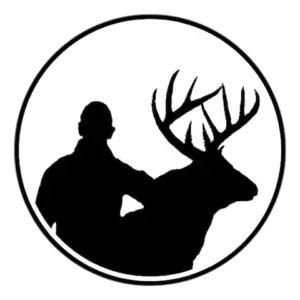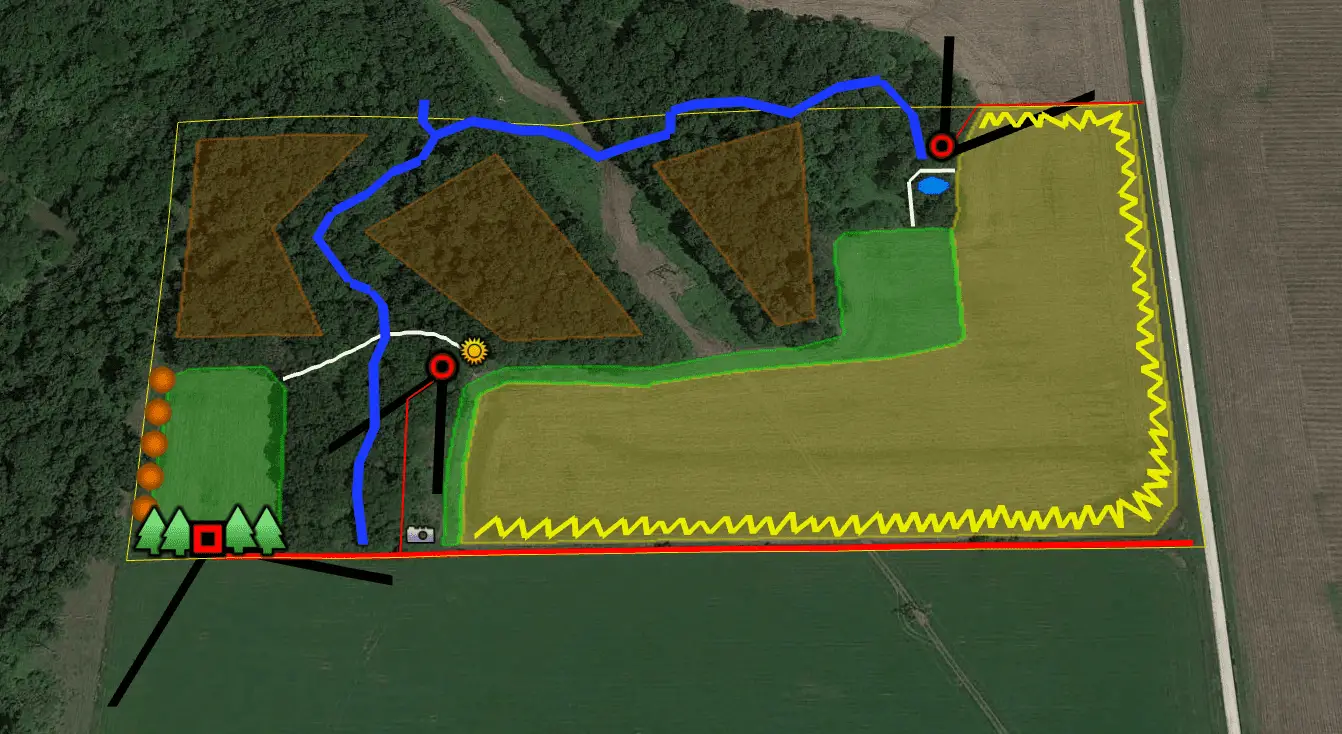How you set a property up for deer hunting will make a huge impact on the quality of your hunts and how many deer you see on that property. When your hunting strategy and property layout are working together towards a common goal of killing mature bucks, the result will be more enjoyable hunts. Setting up a property to increase odds of harvesting mature bucks will also increase your odds of killing any deer using that property.
To set up a property for deer hunting you need a hunting strategy that’s focused on harvesting mature bucks and an aerial plan that shows where to make each improvement such as tree stands, food plots, bedding areas, etc. Deer need the basics of food, water, and cover to keep them using a property, however if you can make deer feel safe while using a property then you will have more successful hunts.
Every hunting property is unique in how it needs to be set up to create the best deer hunting opportunities. Here are some tips and considerations for how to set up your property and where to lay out the various improvements:
1. Surrounding Properties
Before starting to set up your deer hunting property the first thing you need to do is learn about surrounding properties and the general neighborhood. Deer don’t recognize property boundaries so it’s important to understand the bigger picture. Look at a square mile (640 acres) of land surrounding your property and pay particular attention to the following:
- Neighboring hunting pressure
- Neighboring food sources
- Public land that allows hunting
- Land that doesn’t allow hunting (Examples: Public parks, golf courses, etc)
- Major food sources (examples: Ag fields, orchards, etc.)
Recognizing where neighboring hunting pressure exists will help guide you in making decisions on where to lay out your improvements. For example, you wouldn’t want to plant a food plot on your property boundary close to your neighbor’s tree stand.
Areas that don’t allow hunting, like public parks, might be sanctuary areas for deer. Sanctuaries could also exist on a neighbor’s property that doesn’t allow hunting. Deer will spend a lot of time during daytime hours in sanctuaries like this. If you know where the deer already like to be the daytime you can use that to your advantage when strategically setting up your property.
Understanding the food sources surrounding your property will help you attract more deer so that you can offer them something to eat that no one else is offering them.
2. Access Points
How you access a property is going to make a huge impact on how and when to hunt your property. Very few properties can be accessed from all sides. In most situations you will need permission from a neighbor to access a specific side of your hunting property. The more access points you have into your property the better your ability to hunt various wind conditions without alerting deer to hunting pressure.
If you can’t access your property without your wind blowing towards deer, then you should choose to not hunt that day. If you ignore this advice and let your wind blow to the deer then you will alert the deer and educate them that the area isn’t safe. That’s a good way to encourage mature bucks to not use your property during daylight hours and increase the odds of ruining future hunts that you planned on having over the following days and weeks.
3. Sanctuaries
Mature bucks and does want a safe place to bed down during the day. If you want to increase your odds of killing a mature buck year-after-year then you need to get him bedded on your property. The way you get a buck to bed on your property is by providing him with a sanctuary on your property.
A sanctuary is cover that deer can bed down in and safely hide from predators. This cover could be wooded cover, swamps, switchgrass fields, etc. A sanctuary is a place where deer will rarely if ever hear, smell, or see a human.
You should try to create some space between your sanctuary(s) and your food source(s) to encourage deer to travel through as much of your property as possible. This will help generate better hunting opportunities.
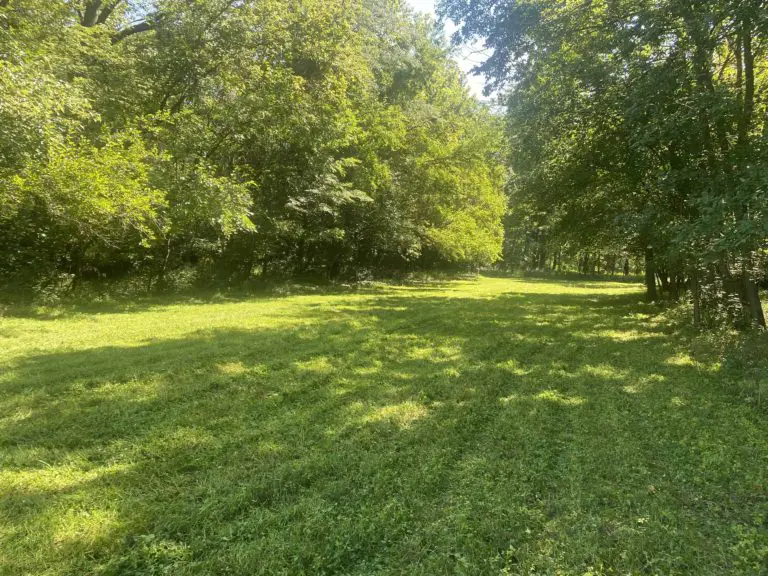
4. Food (Plots, Fruit Trees, Mast Trees)
It’s no secret that deer are slaves to their stomachs. Food sources play a critical role when laying out a deer hunting property. However, don’t lose sight of the fact that a large majority of mature bucks are not shot over a food plot like you see on TV or YouTube.
Food plots will help you keep deer using your property and creates a predictable and huntable movement pattern that you can take advantage of. If you are limited on the acreage that you can plant then try to plant something that the deer can’t find anywhere else in the neighborhood.
There are two key variables to keep in mind if you are wanting to increase the attraction of a property’s food sources. Those two things are plot size and variety. Large food sources have more drawing power than having several micro kill-plots. Lastly, if you have a variety of food sources then odds are good that deer will continue to use your property while food sources are increasing and decreasing in attraction. Try to include fruit trees and mast producing trees such as oaks or chestnuts. This will help will give your property an advantage over you neighbors.
5. Screening (Entry/Exit)
When you hunt a tree stand will the deer be able to see you getting into or out of your stand? You have to think about how deer might see you access your tree stands from the moment you park your truck or leave the house. If you think the deer will be able to see you enter or exit your property then you need to do something to hide your movements.
There are many types of screens that can hide your movements from deer. Some common screening methods are planting shrubs, spruce trees, switchgrass, miscanthus giganteus, and so on. Your screens could also come in the form of man-made berms, hinge-cuts, or perhaps a more natural feature like a steep hillside.
You should also consider how to use screens to hide deer from your neighbors or people driving down roads. Remember that your goal should be to make deer feel safe on your property. You will want to hide other people’s movements just as much as you should hide yours.
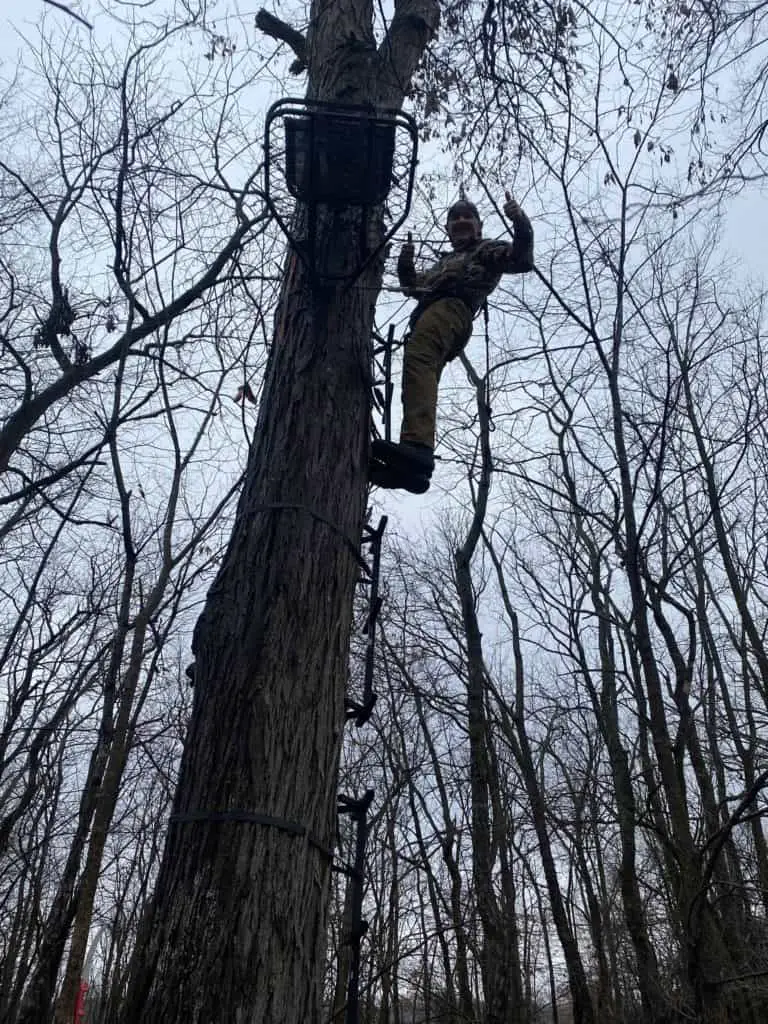
6. Tree Stands and Blinds
When you set up a property for deer hunting it might be a little obvious to say that you should try to use tree stands, or ground blinds rather than hunting on a bucket from the ground. The better you can hide from deer by being elevated or concealed within a blind the better your odds of success will be at killing deer.
It’s ideal to have several different tree stand locations that can be hunted with different wind directions. Having multiple stands will also help keep a stand site from getting burned out and keep deer walking by without being on high alert.
Try to place tree stands in transition zones between bedding areas and food sources. Pinch points, funnels, and waterholes are all great locations for a stand. Set them up on the edge of cover with goal being to try to keep deer from getting downwind of your stand.
Blinds are great for setting up on food plots but remember that you need to have an entry and exit strategy. If you can’t hunt a food plot without educating deer of your hunting pressure then you should not hunt that food plot. You may even need to rethink that food plot location all together. It might be better off as a bedding area.
Deer get most of water that they need from the foods they eat, however waterholes are excellent attractions to include in your deer hunting property plan. Try to make your waterholes as natural as possible and big enough to still hold water during a period of drought or dry conditions.
If you don’t have a natural waterhole already on your property then you can create them by burying a trough in the ground or digging out a small area the size of a truck and installing a liner at the bottom of the hole. Make sure the liner is thick enough so deer and other animals can’t puncture it.
If you are creating your waterholes try to follow two basic rules. The first rule is to place them within shooting distance from your hunting location. The second rule is to make sure the water hole will naturally fill up with water on its own. You don’t want to be hauling in water and putting unnecessary human pressure around your hunting locations. If you have to haul in water to keep a waterhole wet then you should remove that waterhole from your plan.
8. Mock Scrapes
Mock scrapes can be an excellent way to help encourage a buck to come within shooting range of your hunting location. Create mock scrapes upwind from where your tree stand is positioned. You should also try to get these started several months before the season starts so you aren’t putting human pressure on your property unnecessarily within the hunting season or close to it.
If you haven’t tried using a rope scrape you should try this method out. It works really well for me and provides a long-term solution for a mock scrape location. Click here to learn more about rope scrapes.
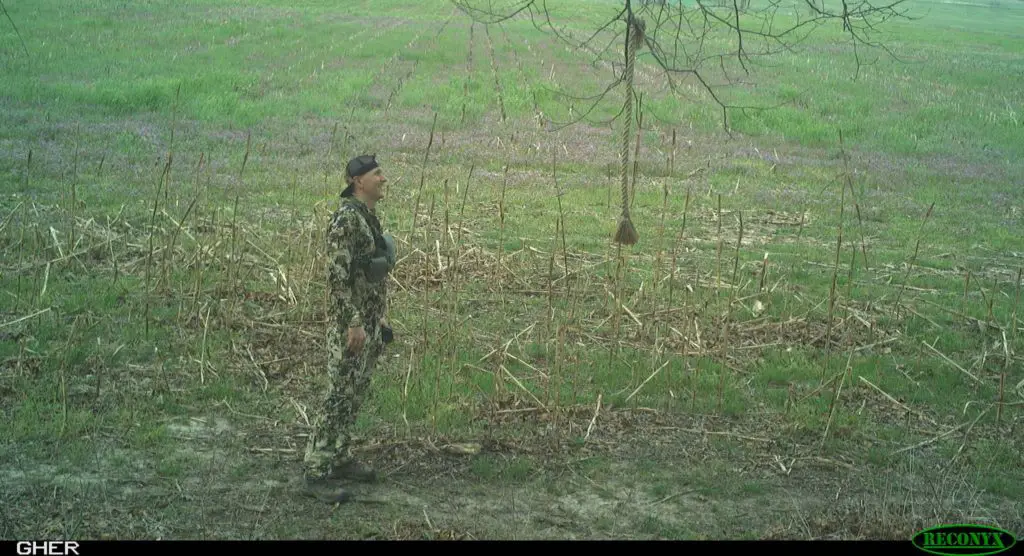
9. Trail Cameras
Trail cameras will help you learn more about the deer on your property and help you decide which bucks to target. Make sure you place your trail cameras in areas that you can easily access without putting much human intrusion on your property. If you can use cellular trail cameras to cut down on human intrusion then that’s highly recommended. However, you still want to put cameras in areas that you can easily access.
Don’t put trail cameras close to your hunting locations. Some bucks will tolerate trail cameras and some get spooked by them. It’s best to avoid spooking deer whenever you can, especially when they are close to your tree stand. Many hunters worry about not getting daylight pictures of bucks; however, this shouldn’t be a concern of yours if you set up your property based on the recommendations in this article. If you get a buck’s picture at night then you have confirmation that he is in your general area and odds are good that he will be using the more secure areas of your property during daylight hours.
10. Fences
Fences serve many purposes when setting up a deer hunting property. Putting a fence around your property will help cut down on trespassing. A fence around a property will also help the deer identify your property as a safety zone as long as you’re treating your property like a sanctuary. If you aren’t treating your property like a sanctuary then a fence will have the opposite effect and your property will be seen as a danger zone.
Fences can steer deer movements and encourage them to walk within shooting range of your stand. Create a gap or open gate in the fence and deer will likely cross the fence at that specific location rather than jumping the fence somewhere else. You can also get deer to jump a fence at a specific spot by lowering the top section of the fence. Make a spot in the fence a little lower and easier to jump than anywhere else along that fence and deer will use it.
Deer will take a path of least resistance in most cases. However, some mature bucks will get a little nervous if they are “pinched” down too tight. Try to make a gap in the fence that’s wide enough for him to walk through comfortably.
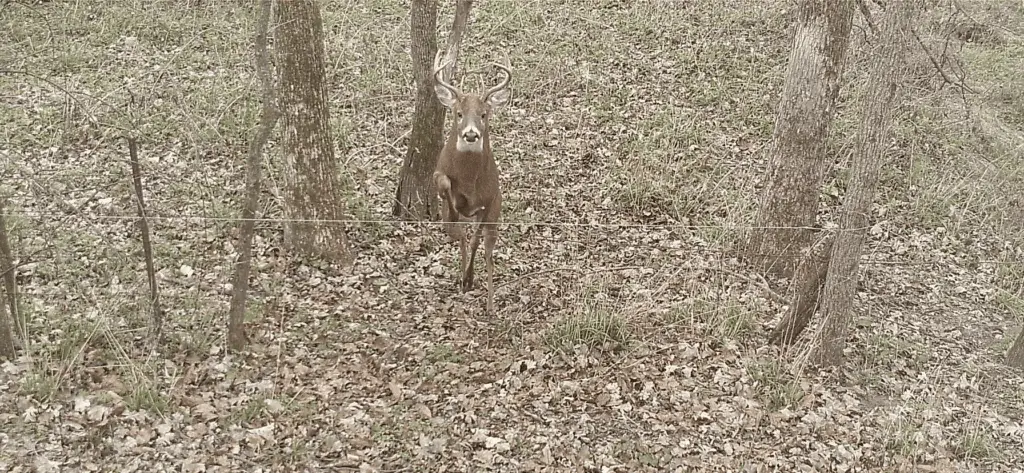
Conclusion
Before you start making improvements to your deer hunting property remember to make a plan first. Map your improvements on an aerial map and ask yourself if the plan works well with how you plan to hunt the property.
If your property allows for it, offer the deer quality cover, a variety of foods, water, and most importantly a sense of security. If you set up your deer hunting property with these things in mind you have more enjoyable hunts and see more success in the field.
